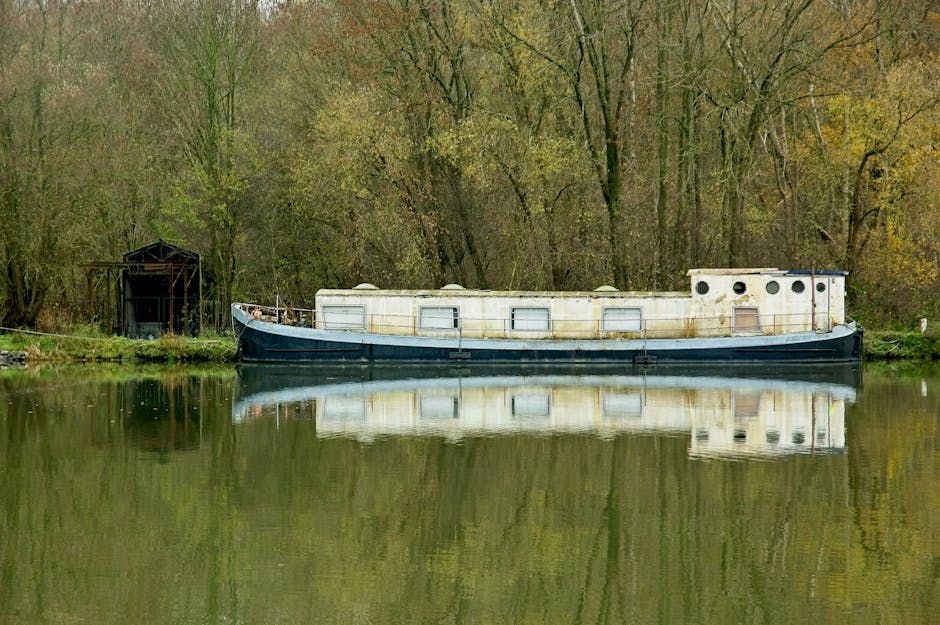In the vast ocean of history, there are tales of grandeur, triumph, and tragedy that continue to captivate our imaginations. Two such stories are those of the majestic Zheng He ship and the ill-fated Titanic. These two vessels, separated by centuries and continents, were both marvels of their time, representing the pinnacle of human engineering and ambition. While their purposes and destinies differed greatly, their stories intertwine to offer us a fascinating glimpse into the triumphs and tragedies of human exploration and innovation.
The Zheng He ship, also known as the Treasure Fleet, sailed the seas during the early 15th century, under the leadership of the Chinese admiral Zheng He. This colossal fleet of ships, numbering in the hundreds, embarked on seven epic voyages, traversing vast distances and establishing diplomatic ties with numerous kingdoms and civilizations. The Zheng He ship, with its massive size and advanced technologies, showcased the remarkable maritime prowess of the Chinese Empire, leaving an indelible mark on history. On the other hand, the Titanic, launched in 1912, was a symbol of the early 20th-century industrial revolution and the pinnacle of luxury travel. This “unsinkable” ship, with its opulent interiors and groundbreaking engineering, promised a new era of transatlantic travel, only to meet a tragic fate on its maiden voyage. The collision with an iceberg led to the sinking of the Titanic, claiming the lives of over 1,500 passengers and crew members. The stories of these two iconic vessels, while vastly different, offer us a glimpse into the triumphs and tragedies of human ambition, showcasing the heights we can reach and the depths we can fall.
The Zheng He ship and Titanic were two iconic vessels from different eras. Zheng He ship, a Chinese treasure fleet, was a massive wooden ship that sailed during the 15th century. Titanic, on the other hand, was a luxurious British passenger liner that famously sank in 1912. While both were impressive in their own right, they served different purposes and faced contrasting fates. Here is a comparison between the two:
| Criteria | Zheng He ship | Titanic |
|---|---|---|
| Size | Massive wooden ship | Luxurious passenger liner |
| Time period | 15th century | Early 20th century |
| Fate | Successfully completed voyages | Sank on its maiden voyage |

The Zheng He Ship
The Zheng He ship, also known as the Treasure Fleet, was a massive fleet of ships commanded by the Chinese explorer Zheng He during the early 15th century. The fleet consisted of several hundred ships, including massive treasure ships that were the largest wooden ships ever built at that time. The purpose of the Zheng He voyages was to establish Chinese dominance in the Indian Ocean and showcase the power and wealth of the Ming Dynasty.
Each treasure ship was approximately 400 feet long and 150 feet wide, with nine masts and four decks. These ships were marvels of engineering and were capable of carrying a large amount of cargo, including silk, porcelain, and other goods. The Zheng He fleet had a crew of over 27,000 men, including sailors, soldiers, and artisans. The ships were armed with cannons and were heavily fortified to protect against potential threats.
The Construction of the Zheng He Ship
The construction of the Zheng He ships was a monumental task that required skilled craftsmen and vast resources. The ships were built using traditional Chinese shipbuilding techniques, which involved the use of wooden planks and beams joined together with dowels and iron nails. The hulls of the ships were constructed using multiple layers of wood to ensure strength and stability.
Each ship was meticulously designed and decorated, with ornate carvings and paintings adorning the interior and exterior. The treasure ships, in particular, were opulent and lavish, with luxurious cabins for the emperor and his entourage. The ships were also equipped with advanced navigational instruments, including compasses and astrolabes, which allowed the crew to accurately navigate the vast oceans.
The Titanic
The Titanic was a British passenger liner that famously sank on its maiden voyage in 1912 after colliding with an iceberg. It was considered the largest and most luxurious ship of its time. The Titanic was designed to be the epitome of luxury, with extravagant amenities and accommodations for its wealthy passengers.
The Titanic was approximately 882 feet long and 92 feet wide, with a total of 10 decks. It had a maximum capacity of about 2,435 passengers and 892 crew members. The ship was equipped with state-of-the-art facilities, including a swimming pool, a gymnasium, and even a squash court. It also had advanced safety features for that era, such as watertight compartments and a double-hull design.
Comparison
While both the Zheng He ship and the Titanic were engineering marvels of their time, there are several key differences between them. Firstly, the Zheng He ship was much larger than the Titanic, both in terms of length and width. The treasure ships of the Zheng He fleet were approximately twice the length of the Titanic.
Secondly, the purpose of the two ships was vastly different. The Zheng He ships were primarily used for exploration and trade, while the Titanic was a luxury passenger liner intended for transatlantic travel. The Zheng He ships played a crucial role in establishing Chinese dominance in the Indian Ocean, while the Titanic aimed to provide the most luxurious travel experience.
Lastly, the construction techniques and materials used were also different. The Zheng He ships were built using traditional Chinese shipbuilding techniques and materials, while the Titanic was constructed using steel. The Zheng He ships relied on skilled craftsmanship and wooden construction, whereas the Titanic utilized modern engineering principles and metal construction.
Frequently Asked Questions
Here are some commonly asked questions about the Zheng He ship and the Titanic.
1. What were the sizes of the Zheng He ship and the Titanic?
The Zheng He ship, also known as the Treasure Ship, was a massive vessel that measured about 400 feet long and 160 feet wide. It was one of the largest wooden ships ever built and was capable of carrying up to 27,000 tons of cargo.
In comparison, the Titanic was approximately 882 feet long and 92 feet wide. It was a luxurious passenger liner and was considered one of the largest ships of its time. The Titanic had a gross tonnage of around 46,000 tons.
2. What were the purposes of the Zheng He ship and the Titanic?
The Zheng He ship was used for several purposes, primarily as a diplomatic and trade vessel during the early 15th century. It embarked on several expeditions, visiting various countries and establishing diplomatic relations. The ship also carried valuable goods such as silk, porcelain, and spices for trade.
On the other hand, the Titanic was designed as a luxury passenger liner. It was meant to provide a comfortable and opulent experience for its passengers as they traveled across the Atlantic Ocean. The ship was a symbol of modern technology and was intended to be the epitome of elegance and luxury.
3. What were the construction materials of the Zheng He ship and the Titanic?
The Zheng He ship was made primarily of wood. It was constructed using a combination of oak, pine, and other sturdy timbers. The ship’s hull was reinforced with iron nails and bolts to enhance its strength and durability.
Contrastingly, the Titanic was constructed using a combination of materials. Its outer hull was made of steel plates, while the interior featured luxurious furnishings and decorations made of various materials such as wood, fabric, and glass.
4. Did the Zheng He ship and the Titanic have any notable technological features?
The Zheng He ship featured several technological advancements for its time. It had multiple masts and sails, allowing it to navigate through various weather conditions. The ship also had watertight compartments and a sophisticated rudder system, which improved its stability and maneuverability.
Similarly, the Titanic incorporated several cutting-edge technologies for the early 20th century. It had advanced communication systems, including Marconi wireless telegraphy, which allowed the ship to send and receive messages. The Titanic also had electrically powered features, such as elevators and a state-of-the-art ventilation system.
5. What were the fates of the Zheng He ship and the Titanic?
After completing its expeditions, the Zheng He ship was eventually decommissioned and fell into disrepair. The exact fate of the ship remains uncertain, as there are no surviving records of its ultimate fate. Some theories suggest that it may have been destroyed or sunk, while others propose that it may have been dismantled or abandoned.
Tragically, the Titanic met its demise on its maiden voyage in 1912. The ship struck an iceberg and subsequently sank in the North Atlantic Ocean. The disaster resulted in the loss of more than 1,500 lives and marked one of the deadliest maritime accidents in history.
In conclusion, the comparison between Zheng He’s ship and the Titanic reveals not only the advancements in shipbuilding technology but also the profound impact of these vessels on the course of history. Zheng He’s massive treasure ships were a testament to the remarkable engineering and navigational skills of the Ming dynasty. These mammoth vessels, with their advanced features and ability to carry a vast amount of cargo, allowed Zheng He to undertake unprecedented voyages of exploration and trade, expanding China’s influence across the seas. On the other hand, the tragic fate of the Titanic serves as a haunting reminder of the limitations of human ingenuity and the unpredictability of nature. Despite being deemed “unsinkable” and equipped with state-of-the-art safety features, the Titanic’s ill-fated encounter with an iceberg resulted in one of the most devastating maritime disasters in history.
Both the Zheng He ship and the Titanic have left indelible marks on the maritime world, albeit in vastly different ways. While Zheng He’s ships represented a triumph of human achievement and exploration, the Titanic symbolized the fragility of human endeavor and the consequences of hubris. These two ships stand as powerful reminders of the boundless potential and inherent vulnerabilities that accompany any feat of engineering. From Zheng He’s awe-inspiring voyages to the tragic sinking of the Titanic, these stories continue to captivate our imagination and teach us valuable lessons about the triumphs and tragedies that shape our shared human history.


















